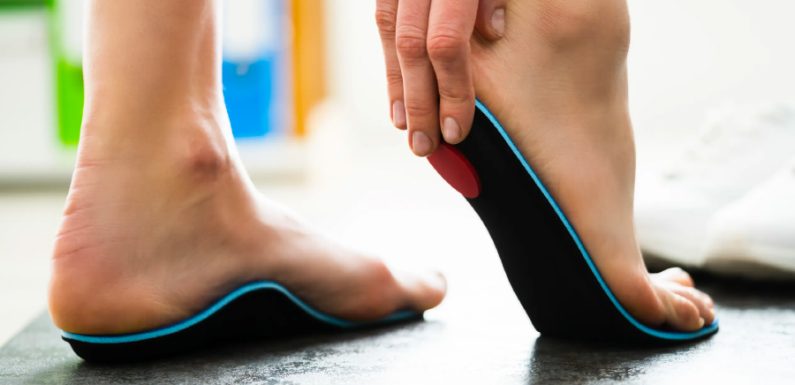
Flatfoot, also known as pes planus, is a common condition that occurs when the arch of the foot collapses, causing the entire sole of the foot to come into contact with the ground. Treatment for flatfoot typically depends on the severity of the condition, as well as the underlying cause.
Here are some common treatments that a podiatrist may use for flatfoot:
1. Orthotics:
Orthotics are custom-made shoe inserts that are designed to provide support to the arch of the foot. These inserts can help redistribute pressure throughout the foot, alleviate pain and discomfort, and improve overall foot function. Podiatrists may use a variety of orthotics, such as soft, semi-rigid, or rigid inserts, depending on the severity of the condition and the patient’s individual needs.
2. Physical therapy:
Physical therapy can be an effective treatment for flatfoot, particularly when the condition is caused by a weak or inflexible foot or ankle. A podiatrist may recommend exercises and stretches to improve muscle strength and flexibility in the foot and ankle. These exercises can help support the arch of the foot, reduce pain and discomfort, and improve overall foot function.
3. Bracing:
In some cases, a brace or splint may be used to provide additional support to the foot and ankle. Bracing can help stabilize the foot and prevent the arch from collapsing further. Depending on the severity of the condition, a podiatrist may recommend a variety of different braces, such as ankle-foot orthoses (AFOs), which are worn on the lower leg and extend down to the foot.
4. Medications:
Over-the-counter pain relievers, such as ibuprofen, can be helpful in managing pain and inflammation associated with flatfoot. These medications work by reducing inflammation in the affected area and can help alleviate symptoms of flatfoot.
5. Surgery:
In severe cases, surgery may be necessary to correct the underlying structural issue causing flatfoot. Surgery may involve repairing or reconstructing the affected tendons and ligaments, removing bone spurs or other obstructions, or fusing the bones in the foot. Surgery is typically only considered when other treatments have not been effective, and the patient is experiencing significant pain or difficulty walking.
6. Taping:
Taping techniques can be used to provide temporary support to the foot and alleviate symptoms of flatfoot. Taping may involve using adhesive tape to support the arch of the foot and help redistribute pressure throughout the foot. A podiatrist can demonstrate proper taping techniques and recommend the most appropriate tape for the patient’s needs.
7. Footwear modifications:
Wearing appropriate footwear can be helpful in managing symptoms of flatfoot. A podiatrist may recommend shoes with a supportive arch or heel, or shoes that are specifically designed for individuals with flatfoot. In some cases, custom-made shoes may be necessary to provide the proper support and cushioning for the foot.
8. Weight management:
Maintaining a healthy weight can be beneficial in managing symptoms of flatfoot. Excess weight can put additional strain on the feet and exacerbate symptoms. A podiatrist may recommend dietary changes and an exercise program to help the patient achieve and maintain a healthy weight.
9. Corticosteroid injections:
In some cases, corticosteroid injections may be used to alleviate pain and inflammation associated with flatfoot. These injections are typically used in conjunction with other treatments, such as physical therapy or orthotics.
It’s important to note that treatment for flatfoot may involve a combination of these approaches, and that the specific treatment plan will depend on the individual patient’s needs and the severity of their condition. A podiatrist can evaluate the patient’s condition and recommend the most appropriate treatment plan.

